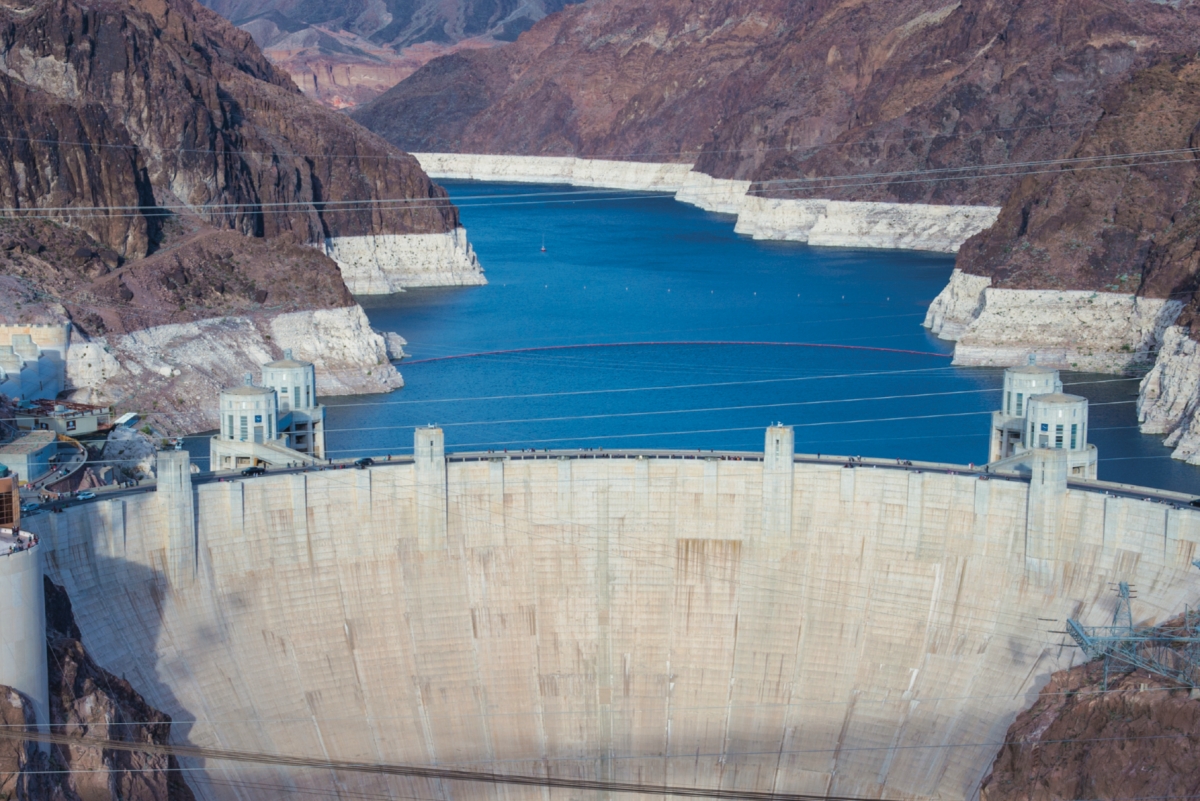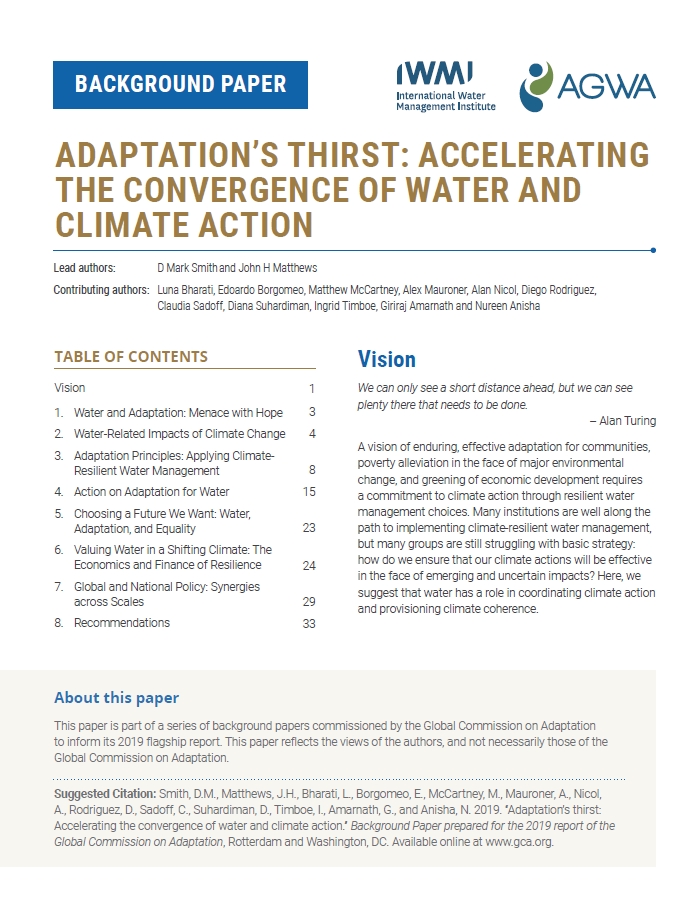
by Mark Smith
Anyone looking at the mega-challenge of adapting to climate change quickly sees that success is going to depend on managing water. Any description of the perils of climate change immediately mentions droughts, floods, extreme rainfall, disappearing glaciers and lost snowpack, because climate change is water change. Yet, there is a history of miscommunication between the water and climate change communities of practice that has meant water is misunderstood as just another sectoral concern – championed by a partisan “water sector” – rather than a deeply cross-sectoral resource that opens the door to solutions for adaptation that work across sectors and whole systems. As a UNFCCC official commented at COP 22 in Marrakesh in 2016, the two communities need to come together to answer the question: what can the water community do to advance climate change targets, and what can the climate community do to help advance water resilience targets?
 In the background paper for the Global Commission on Adaptation, Adaptation’s Thirst: Accelerating the Convergence of Water and Climate Action, myself and John Matthews of the Alliance for Global Water Adaptation (AGWA), with a group of contributing co-authors, provide a path forward on the question posed by the UNFCCC and outline how managing water beyond and across sectors builds resilience to climate change. We argue that the perceived challenge of water’s dual nature needs to be flipped, recognizing water instead as an opportunity to align agendas for water and climate change adaptation around water resilience. We can then move from a defensive approach to adaptation to imagining how we can thrive, through collaboration, as the climate changes. In Adaptation’s Thirst we make the case that our responses to climatic uncertainty should be neither despair nor inaction but courage and hope; we should be choosing the future we want to move towards and finding realistic means to make it a reality. But, turning water from a climate menace to a source of solutions enabling adaptation is irreplaceably key to doing so.
In the background paper for the Global Commission on Adaptation, Adaptation’s Thirst: Accelerating the Convergence of Water and Climate Action, myself and John Matthews of the Alliance for Global Water Adaptation (AGWA), with a group of contributing co-authors, provide a path forward on the question posed by the UNFCCC and outline how managing water beyond and across sectors builds resilience to climate change. We argue that the perceived challenge of water’s dual nature needs to be flipped, recognizing water instead as an opportunity to align agendas for water and climate change adaptation around water resilience. We can then move from a defensive approach to adaptation to imagining how we can thrive, through collaboration, as the climate changes. In Adaptation’s Thirst we make the case that our responses to climatic uncertainty should be neither despair nor inaction but courage and hope; we should be choosing the future we want to move towards and finding realistic means to make it a reality. But, turning water from a climate menace to a source of solutions enabling adaptation is irreplaceably key to doing so.
While water’s role in climate change is complex, action needed on water in climate change adaptation can be made practical. In fact, emerging practices of water management for resilience are well founded and can be implemented today. The opportunity now is for climate change adaptation to integrate robustness and flexibility in water-relevant planning, and for the broader water community to modify management practices to include action on resilience. Climate-resilient water management (CRWM) is an integrated approach to building resilience. Robust decision-making and flexibility are embedded in CRWM through an action framework that spans across the domains of governance and participation, knowledge and learning, system diversity and connectivity, as well as infrastructure, technology and management for resilience. Key to implementation is multi-level governance, in which institutions at all levels have responsibilities that foster cross-sectoral collaboration. This action framework accounts for the intricacies water management calls for, while bolstering resilience to future climatic uncertainties.
Climate-resilient water management should be the unifying agenda for water and climate change adaptation. This becomes clear with an understanding that water-related climate impacts cascade across systems in complex ways, with consequences for economies, food systems and ecosystems, for the movement of people and the security of communities, and for the eventual success or failure of sustainable development. Myself, Matthews and co-authors highlight the increasing amount of recognition water is receiving as an enabler of adaptation in climate change action. Water management is in fact the critical bridge linking climate change adaptation and resilience. Every decision we make now about water management, therefore, is also a chance to build resilience more broadly, enabling and amplifying the effectiveness of action on climate change adaptation. As stated in Adaptation’s Thirst, “Through water, we can prepare.”

